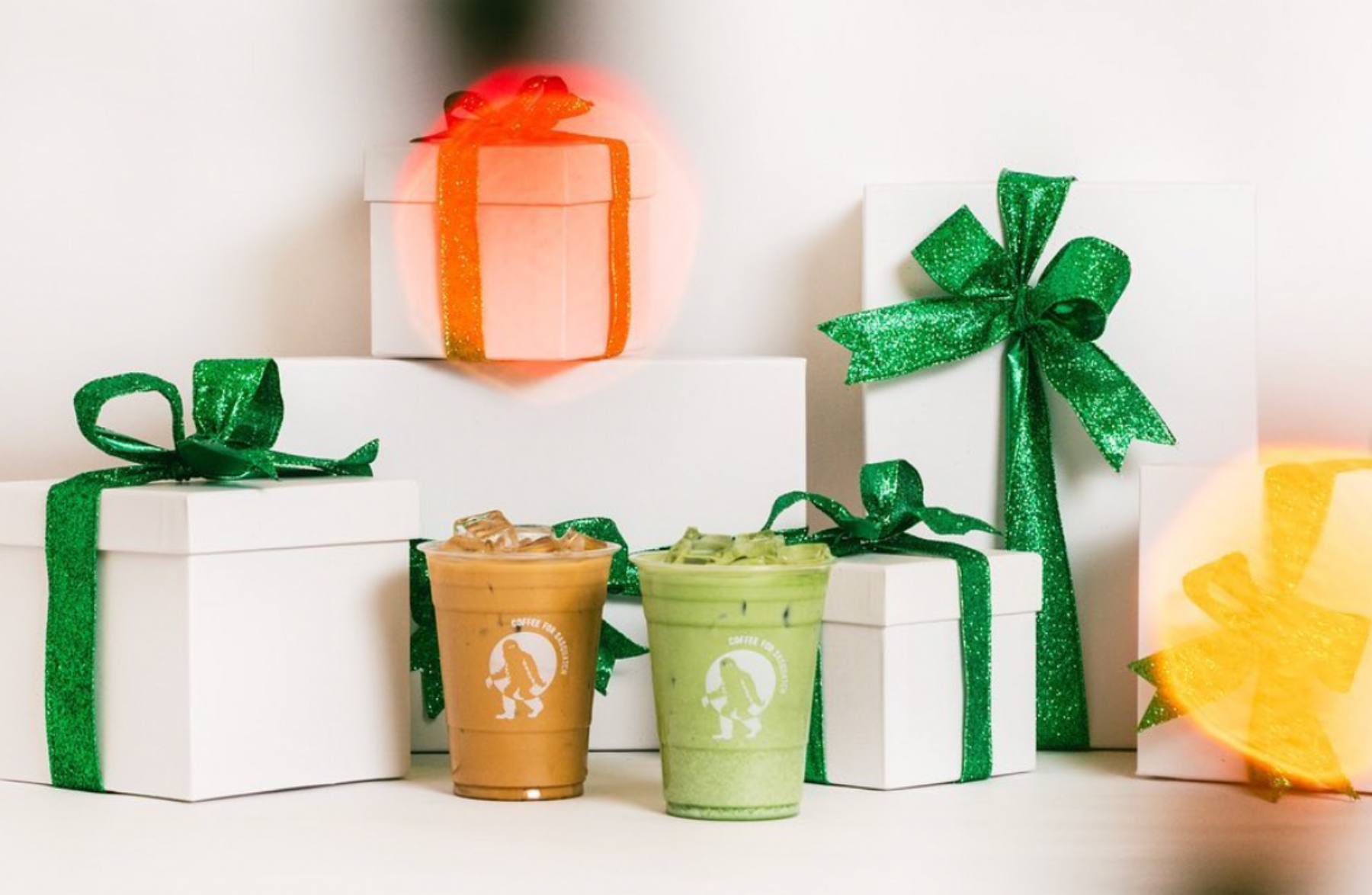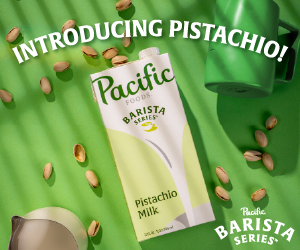Years ago, I was working at a theatre in West Hollywood. There seemed to be a coffee shop on every block, so when I heard of a new spot opening up called Coffee For Sasquatch— featuring wraparound marble seating, a wall with a Sasquatch figure made of plants, and a stormy abstract mural—I was drawn in.
Coffee For Sasquatch became my regular spot. I was browsing their menu during a visit when I saw a handwritten drink specials sign near the register that said, “The Liverpool Latte.” The drink was Earl Grey Tea steeped in espresso with steamed milk, which caught me off guard as I had never seen a drink like that on a menu.
I ordered it without a second thought. I ended up with a slightly citrusy latte that emphasized both the complexity of the espresso and the depth of the tea. The combination of tea and espresso was disorienting, as though mixing the two somehow broke a rule.
Tea and coffee are often presented as opposites. We even presuppose that people can be grouped by their allegiance to one or the other, that one is either a “tea person” or a “coffee person.”
But if there’s a rule against combining coffee and tea, it’s an unwritten one meant to be broken. Tea and coffee are an unexpected pairing that already exists in drinks available at your local shop. But they can also provide a foundation for crafting engaging and exciting signature drinks—all with items already in your cafe.
Coffee and Tea: Already Matched
Most shops present coffee and tea on separate sides or sections of a menu, but some common combinations are readily available at most places.
A chai latte with espresso is one of the most common examples: often called a dirty chai, this tea + coffee combination features either brewed chai (a black tea) or chai concentrate, milk, and a shot of espresso. Not only does the espresso provide that extra caffeine kick when paired with tea, but the flavor of the coffee complements the spices in the tea, like cinnamon, ginger, and clove. A dirty chai can be served hot or iced, and customers can request an additional shot of espresso to make it “extra dirty,” though each shop has its own recipe.
Another example is yuanyang, a popular drink served by street vendors in Hong Kong. Also available over ice or hot, yuanyang is made with strongly brewed coffee and milk tea. The name yuanyang refers to Mandarin ducks and represents the old saying, “opposites attract.”
One of the most potent drinks combining coffee and tea is a matcha latte with an added shot of espresso. This drink has several names: a dirty matcha, a military latte, and a matcha espresso fusion latte. Whatever you call it, the drink is robust and highly caffeinated. The critical part of this drink is balancing flavors. A great matcha + espresso drink balances the earthy flavor of the matcha with creamy milk and sweet coffee notes without any part overpowering the other or the harsher aspects of the coffee or matcha lingering unpleasantly.
Drinks like these demonstrate that coffee and tea show up together in combination all the time. Most shops offer a variety of coffee and tea options, so creating a harmonious mix is just a matter of working with ingredients you already have.
Finding A New Partner
It can be challenging to know where to start if you’re working in a cafe and want to play around with new and innovative tea and coffee combinations.
One way is to incorporate tea into a syrup. For example, lavender is a popular syrup flavor, but adding other flowers or herbal tea blends to your simple syrup can make for a great spring menu special.
Inspired by the Liverpool Latte I tried years ago, I created a blueberry Earl Grey syrup for a shaken iced latte. The coffee and tea shine in a new and unexpected way by utilizing the strong citrus notes from the bergamot oil that flavors Earl Grey tea and pairing it with blueberry.
You can mimic smoky notes using oolong teas or a Russian Caravan blend, a combination of two teas noted for their smoky and sweet balance. Using these teas in combination with vanilla can serve as a base for a toasted marshmallow or s’mores flavored drink that’s perfect for the fall.
When conceptualizing pairing the two together for a signature drink, it is valuable to consider complementary notes in tea and coffee. Above, I discussed using black tea in an espresso-based drink because the flavor is more intense, and I wanted to highlight the robust flavors of both ingredients. If you’re going for a more delicate pairing, think about using light roasted coffees or subtler teas like green or white tea to pair together. When exploring possible combinations, you’ll find that factors such as origin, notes, and even how the tea or coffee is brewed can affect taste and presentation.
An Unlikely Pairing
Many tea and coffee pairings are highly caffeinated: coffee is already enough to jumpstart most people’s mornings and save herbal options, most teas contain caffeine. In some instances, however, tea can completely replace coffee as an ingredient, playing with the idea of coffee and tea in combination by reducing, or even eliminating, the caffeine content.
In place of traditional espresso, red espresso is a caffeine-free rooibos tea alternative that can be ground and prepared just like traditional espresso. Chicory is a caffeine-free herb that mimics the taste of coffee and is an excellent option for those that want to enjoy the taste of coffee without the jitters. Chicory is also commonly added to coffee and cold brew to add a deep coffee flavor without additional caffeine, such as the New Orleans-style coffee made famous by Cafe Du Monde and sold by companies like Blue Bottle.
Tea and coffee are well-loved daily staples, and the combination of the two, while uncommon, can lead to delicious results. Common pairings like a dirty chai and military latte show up on coffee shops menus all over, but shops shouldn’t be afraid to make their own signature tea + coffee beverages.
When you treat tea and coffee like two complementary ingredients rather than two opposing flavors, you can expand your menu options and create new and exciting signature drinks with cafe staples. The creative possibilities are endless.
Photos courtesy of Coffee For Sasquatch.
Brit Alexandria (they/them) is a writer, content creator, and Lead Barista based in Williamsburg, VA. They have been living and writing online since 2006, and have worked in coffee since 2017. After years of working in coffee, they realized that they wanted a space to talk about coffee, gender, and provide resources to marginalized coffee people so they started the website, The Non-Binary Barista, in January 2020. When they aren’t writing, they are watching period films or brewing coffee and tea.



















